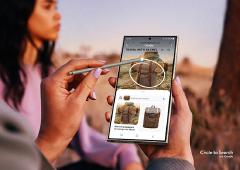Categories
Nokia G22 Review: a smart, eco-friendly budget smartphone
8 minute read

If you’ve been thinking of snapping up the marvellous Nokia G22, you’re in luck. One of our wondrous members, wsjudd, is here to share his hot takes on this exciting smartphone.
Nokia G22 Review: a smart, eco-friendly budget smartphone
Cheap smartphones are crazy-good these days. You can get brand new models with flagship features and modern designs, multiple cameras and decent performance for just a few hundred quid. Today, we’re looking at one device that ticks all those boxes for £150. You got it. It’s the Nokia G22.
On paper, the Nokia G22 is pretty impressive, promising a 50-megapixel camera, eight-core chipset and 90Hz display. All that plus the Android 12 OS system ought to offer a good user experience. Having now tested the phone myself, I hope I’ll be able to fill in the blanks if the Nokia G22 is a potential pick for your shopping list.
Design and Hardware
The G22 is available in meteor grey or lagoon blue colourways. My review unit is the grey model, which looks pleasant but not eye-catching. Meanwhile, the blue alternative is a lovely shade of teal that offers a bit more of a visual identity.
Inside, a Unisoc T606 12nm chipset offers eight cores with 4GB of RAM and 64GB of expandable storage (around average to good for this price category) while the 5005mAh battery delivers dependable multi-day longevity. 5G is not included, so this is a 4G-only device.
Overall, it’s a reasonable spec sheet for the price point, with no glaring weak points, but the phone’s entry-level chipset first debuted in 2019, so we’d expect to see significantly better performance per watt from the 4nm and 5nm chipsets that debuted mid-range phones over the past two years.
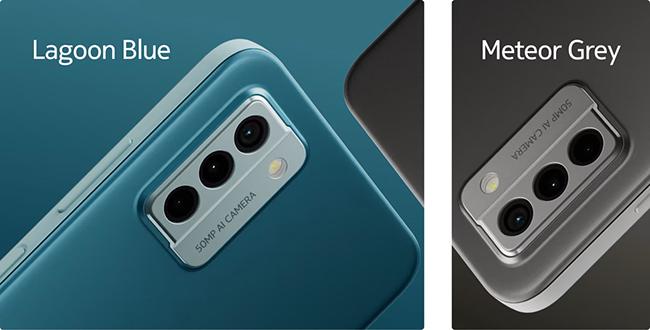
The 6.5-inch 1600x720 screen is tall, with a 20:9 aspect ratio and droplet-shaped cut-out at the top of the phone for the front-facing camera. The corners of the screen are noticeably more rounded than I’m used to on the similar-sized Pixel 6, a design choice emphasised by the time and battery percentages packed tightly into the top corners.
The IPS display offers a 90Hz refresh rate, making it feel more responsive than your standard 60Hz screen, and it’s reasonably bright and vibrant too. Again, the screen is a little low-resolution by modern mid-range standards, but it’s overall impressive for a budget device in terms of design, colour reproduction and responsiveness.

A soft, clear ‘gel’ case is provided with the phone; always a benefit for less popular phones that may be difficult to find third-party options for. The case includes some reinforcement at the corners and has a small lip around the edge of the screen to prevent scratches and cracks. If I was using this phone long-term, I’d be tempted to either use it caseless with insurance or get a thicker and more drop-resistant case if one is available, as this one feels a bit clumsy. Still, as a free extra, it’s welcome.

The right side of the phone houses a combo power button and fingerprint reader, which worked conveniently and reliably in my testing, with a volume rocker above. The base has a USB-C port and 3.5mm headphone jack, always great to see, while the left side has the SIM + Micro SD card tray, making the phone accessible to all sizes of SIM cards.
Interestingly, the phone claims to be user-reparable, with iFixit guides and Nokia parts available for replacing the display and battery, which is really great, letting you save on expensive repairs if you’re feeling handy. The back of the phone is also made from 100% recycled plastic, which is cool too.

On the back of the G22, there is an impressive-looking camera setup, with three lenses (wide, ultrawide, macro), a flash and the phrasing “50MP AI camera”. We’ll see how the camera performs soon, but for now, let’s turn on the G22 and take a look at the software side of things.
Software
In terms of software experience, Nokia plays it very straight with a stock Android 12 experience. I only spotted one addition; a device health app that includes info on your memory, storage, battery and signal. That means that if you’re familiar with stock Android, you’ll be quite at home here, but if you’re used to a more feature-rich or visually distinct style as you can get on phones from Korean or Chinese vendors, then you may have to use apps or theming to add any missing pieces you’re used to.

It’s a bit disappointing to not see an Android 13 update available, given this was released in August last year, but the firm does promise a three-year warranty, monthly security updates and two years of Android upgrades, so up to Android 14.
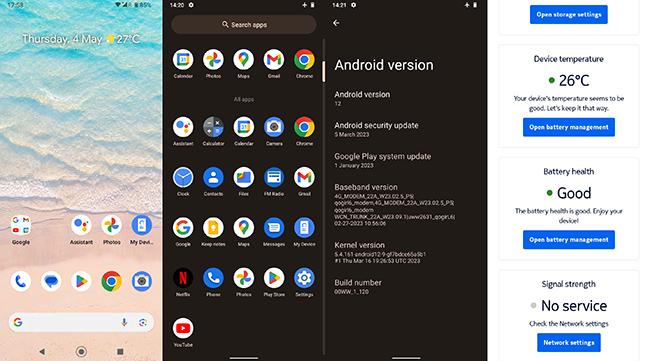
Camera
Despite the promises of the 50MP sensor, tri-lens array (wide, macro, depth) and ‘AI’ processing, the G22’s camera performance is uninspiring. Images taken in good light come out with a reasonable amount of detail, but it only takes the light to fade marginally to drop to quality levels that would have been familiar to flagship phone users five to 10 years ago. Portraits take on a painterly appearance, with blocky image break-up, and any amount of hand movement enforces a blurry output.
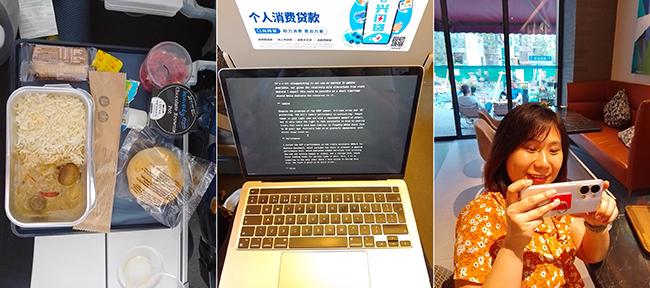
The macro mode is annoying to engage. You can find it in a mode submenu, or wait for the “AI” scene recognition to prompt you to use it. Even then, it doesn’t take photos with a particularly impressive level of detail. Other modes include **portrait, night mode, panorama and time-lapse.
For video, there is a normal video and slow-motion video option. None of these is particularly great, given the poor base quality of the sensor and processing combo, but the modes at least work as they should. An eight-megapixel front-facer is also included and at least produces decent results.
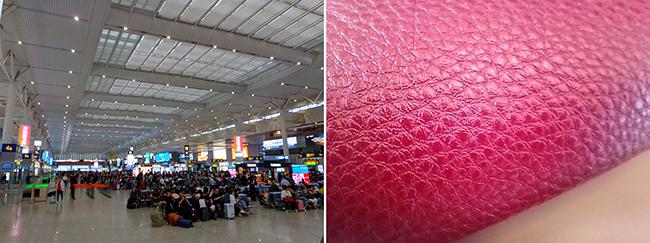
Based on the generally disappointing camera performance overall, I’d suggest picking up an older and/or refurbished Pixel if photography is important to you. The Pixel 6 is available at around £300 these days and is worlds better, but even something like the Pixel 6A, Pixel 3 or the original Pixel ought to offer a significant improvement.
Performance
I tested the Nokia G22’s performance using the 3DMark for Android benchmark, which includes two tests at present: a Performance Test, which evaluates common workflows like browsing the web and editing images or videos; and a Storage Test, which looks at loading times for various types of data. Here, I’ll be comparing the G22 to the only other phone I have access to during this trip, the Pixel 6.
In the Storage Test, the Pixel 6 scored 21838 while the G22 hit 21966, with the Pixel doing better in sequential reads and the G22 offering more consistent random performance. So that’s a win for the G22, but of course, we do expect storage performance to degrade as the phone fills up, and the G22’s result is with only a few apps installed versus my years-old Pixel. So storage performance is fine, but the result perhaps flatters to deceive.
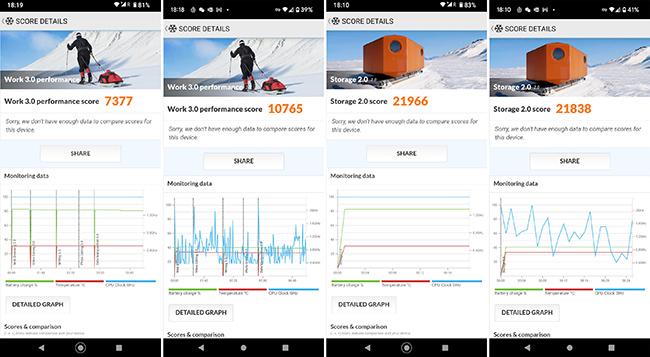
Interestingly, the graph shows that the G22 is able to maintain its ~1.6GHz speed throughout the test, while the Pixel 6 oscillates between 0.4GHz and ~2.1GHz. Perhaps this is an indicator that the G22’s performance is being artificially boosted while the test is running, or that it is tuned to maximise its limited performance while the Pixel boosts more opportunistically to conserve battery life.
In the Performance Test, the Pixel 6 managed 10765 compared to 7377 for the G22. Again, we saw the same CPU behaviour (pegged for the G22, variable for the Pixel) with the G22 being fractionally faster for web browsing, while the Pixel winning the other subcategories convincingly. That includes video editing (Pixel 53% faster), writing (85% faster), photo editing (54% faster) and data manipulation (69% faster).
Outside of benchmarks, the G22 has a noticeable lag compared to the Pixel 6, but still relatively responsive. You’re certainly not left waiting for apps to load, but despite the 90Hz refresh rate of the screen, it felt like there was a bit of a disconnect between scrolling or tapping and those actions being recognised. For folks used to older budget handsets, the phone will feel fine or even speedy, but if you’re coming from an older flagship, particularly a model that prizes responsiveness, you may feel the G22 is a small step down.
Value
Overall, the Nokia G22 is a strong option at its £150 price point, with design, battery life, performance and software all as good as I’d hoped or better. It’s a pleasant phone to use, feels nice in the hand and lasts for an absolute age. Just don’t expect too much from that “50 MP” “AI” camera, which doesn’t come anywhere close to delivering the image quality you’d expect from its impressive description.
Fancy getting your hands on the Nokia G22? Pick one up from giffgaff today.
Thanks for reading the review and feel free to ask any questions via Twitter @wsjudd or take part in the discussions on the giffgaff community forum.




